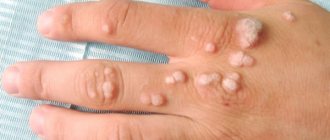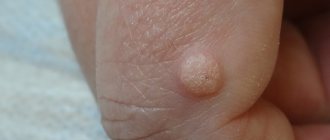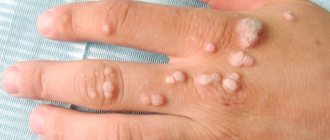People of all ages face problems that require the intervention of a medical specialist for health reasons or for aesthetic reasons. One of the reasons for visiting a medical clinic is the removal of moles using electrocoagulation. This method is used in cosmetology and medicine, as it has low trauma and a short rehabilitation period. Otherwise it is also called - removal of moles with an electric knife. The procedure requires sterility, so it is carried out only in medical institutions.
Removal of moles by electrocoagulation in our clinic
Our medical center, along with others, uses this method of treatment, since cauterization of moles with an electric knife is convenient and painless for patients, and also has a number of other advantages:
- minimal percentage of development of undesirable consequences after removal
- no need for hospitalization
- the opportunity to conduct a histological examination of the tumor
- short recovery period
- no need to use general anesthesia
- The procedure takes no more than 20 minutes
- positive aesthetic result
- affordable price of service
Removal of moles using electrocoagulation is indicated for most patients who contact our clinic to solve this problem. However, it is not always possible to use an electric knife for such purposes. You can find other methods and indications for their use here and here. Before performing electrocoagulation, it is necessary to identify the presence of contraindications.
Interesting fact! Moles can appear and disappear without a trace throughout your life. On average, there are from 25 to 100 nevi of various shapes and sizes on the human body.
The need for proper wound care
The period after removal of a mole is no less important than the operation itself. The success of the procedure depends on how well the healing proceeds.
Compliance with all rehabilitation rules will help:
- accelerate the process of tissue regeneration;
- protect yourself from possible bleeding;
- relieve pain and other postoperative symptoms;
- prevent the introduction of pathogenic microorganisms into the damage hole;
- reduce the likelihood of relapse;
- prevent the formation of scars and scars.
After the operation, the attending physician will guide you through the necessary actions. He will tell you what means to treat a fresh wound after removing a mole, and tell you what you can do and what you can’t do.
If a person ignores the doctor’s advice on care, he may encounter a non-healing weeping wound, discharge from the affected area, increased body temperature, swelling, increased pain, and tissue necrosis.
If a person cannot independently care for a wound (a mole on the back, shoulders), it is necessary to seek the help of an outsider.
Preparing to remove moles with an electric knife
Proper preparation is the key to the successful completion of every medical procedure. Cauterizing a nevus with an electric knife is no exception, but in most cases does not require special preparation. We prescribe tests before the procedure for removing a nevus using electrocoagulation if you have a history of heavy bleeding or there are doubts about the benignity of the mole. In the above situations you will need:
- Clinical blood test.
- Coagulogram (determination of blood clotting indicators).
- Blood test for tumor markers.
Since removal of moles with an electrocoagulator does not require general anesthesia, there is no need for a “fasting” regime on the eve of surgery.
What is the essence of electrocoagulation?
There are cases when seemingly harmless formations develop into malignant tumors. This can happen due to the influence of many factors, among which a special place is occupied by the effect of sunlight on moles.
Content:
- What is the essence of electrocoagulation?
- About risk factors
- When is electrocoagulation of moles indicated and contraindicated?
- Pros and cons of the procedure
- Mole removal procedure
- Postoperative care
- Possible complications and consequences
Modern medicine has armed itself with various methods of combating unwanted growths that interfere with normal life. The safest treatment methods include electrocoagulation, surgery, laser destruction and radio wave removal. A simple and effective way to protect your own health is electrocoagulation of moles.
The technique is based on the use of high-frequency current discharges, which act as a surgical scalpel. These current discharges make small incisions in the area of the nevus. The tumor is cut off layer by layer.
The device that delivers current discharges is called an electrocoagulator. Electric current affects the desired areas of the skin and prevents bleeding (performing a cauterization function). This technique is considered effective, and with the most minimal risk of infection.
How does mole burning work?
The procedure for removing a nevus with an electric knife includes the following steps:
- Visual inspection of the birthmark.
- Treating the surgical field with a skin antiseptic to prevent infection from entering the wound.
- Local application of a local anesthetic.
- The procedure for removing a nevus using an electric knife.
- Treatment of postoperative wound.
Burning out a nevus with an electric knife takes place in one movement, so you will not feel pain or burning. Some patients experience a slight tingling sensation where the device comes into contact with the skin.
Important! Self-removal of skin tumors is strictly prohibited. This can lead to the development of undesirable consequences such as inflammation, sepsis (blood poisoning), skin cancer. If necessary, you should contact a specialist at a medical clinic.
Contraindications to burning moles
New growths on the skin can be benign or malignant. Removing moles with a coagulator is considered safe provided that the nevus does not show signs of developing a cancerous tumor. The doctor determines the primary signs during a visual examination. You cannot remove a nevus using an electric knife if you suspect the formation of a malignant process. Also contraindications include:
- bleeding disorders
- intolerance to electrical procedures
- allergic reactions to local anesthetics
- herpetic infection in the acute phase
- an inflammatory skin disease at the site where a mole was burned out with an electric knife
Any such case must be eliminated before electrocoagulation is performed.
Types of coagulation
There are different methods of coagulation:
Electrocoagulation . Removal of a mole or wart using this method is carried out in such a way that after completion of the procedure, the biomaterial can be sent for histological examination. By freezing the tumor with liquid nitrogen, this possibility is eliminated.
An electrocoagulator is used to remove moles. This device consists of two parts - an electric current generator and an electrode to which high-frequency current is supplied. As a result of cauterization, the mole or papilloma moves away from the skin, leaving a barely noticeable wound. After some time, a crust will appear on the treated area, which will then come off without leaving a trace. If a large mole is removed, a light spot will remain in its place after healing, but then it will take on the normal skin color.
After cauterization, a small thermal burn is possible around the removed tissue. After the removal procedure, you need to treat the skin with healing creams and ointments for a week.
Radio wave coagulation . The method of operation of a radio wave coagulator is based on the conversion of electric current into radio waves. Radioknife can be used to remove warts on particularly sensitive skin. The advantage of the method is that the radio knife does not cause burns. The tumor is removed quickly, the whole process takes about five minutes, and immediately after this the patient can go home.
Both methods are used using local anesthesia.
Refusal to cauterize a mole
Refusal to remove the tumor in some cases leads to undesirable consequences. This is especially true for protruding birthmarks located in those parts of the body that can be easily injured. This, in turn, leads to heavy bleeding or degeneration of the nevus into a cancerous tumor. If the mole is located on an open area of the body, constant exposure to ultraviolet rays may also contribute to this. These complications pose a serious threat to human health. Therefore, it is better to seek medical help from a specialist in time and undergo, if not removal, then at least a visual examination and obtain a conclusion that the mole is not a malignant formation. But remember that you can 100% declare this only after histological analysis.
Interesting fact! There is a belief that a birthmark is located above a diseased organ and warns a person about a possible disease. Official medicine does not find confirmation of this. Most likely, this belief came to us from Eastern practices.
About risk factors
Moles on the body need to be monitored so that they do not develop into a serious disease, such as melanoma. Skin cancer is a common cancer that occurs in people of different age groups. In the early stages of the disease, you can begin an effective course of treatment and defeat the disease.
Risk factors influencing the degeneration of a nevus into melanoma: trauma to the neoplasm, constant and prolonged exposure to the sun, hormonal changes, dysfunction of the endocrine system, genetic predisposition. Doctors warn that if the process of nevus degeneration into skin cancer begins, it will not be easy to stop.
You should consult a doctor if you have the following symptoms:
- changes in the size and shape of the nevus;
- intensive growth of education;
- bleeding from a mole;
- wrinkling and peeling of the neoplasm;
- uneven color of the nevus;
- hair loss around the growth.
If you have one or more symptoms, you should seek help from a dermatologist or surgeon. After undergoing a complete diagnosis of the body, the specialist will decide which method is best to remove the growth.
Is a relapse possible after removing a mole with an electric knife?
After surgery using the coagulation method, in most cases there is no relapse. The occurrence of complications is possible only if the technique of performing the manipulation is violated. This happens, for example, when there is insufficient tissue capture. As a result, pigmented cells remain in the deep layers of the skin and a new mole appears at the site of removal. This point usually depends on the skill of the doctor. We also employ a certified doctor, whose experience you can find here.
In our clinic you will receive professional medical services. A specialist doctor will examine the tumor and give recommendations for treatment. Together with the doctor, you can determine the tactics of further actions and sign up for the necessary medical procedure, or do it right away.
If you still have questions, you can ask them to the administrator by phone listed on the website or request a call back. We warn you that administrators have general medical education and cannot always help with the details and subtleties of certain procedures. For a detailed consultation, make an appointment with your doctor.
Primary source honey / September 2018
Prevention of scars at the site of nevus
In most cases, the risk of skin scarring depends on the method used to perform the excision surgery. The highest probability of such an outcome after use:
- acids;
- cryodestructive method (liquid nitrogen);
- if surgical excision with a scalpel is performed.
Least likely when using coagulators. These include:
- high temperature laser;
- radio wave method (radio knife, or better known name Surgitron);
- electric shock method (known as electrocoagulation or electric knife).
Speedy healing ensures proper care of the painful area. If a suture is applied, it must be removed in a timely manner. Regular dressings, the use of special creams, and ensuring the integrity of the surface will help protect against the growth of connective tissue.
Proper adherence to all recommendations for wound care after removal of a birthmark will prevent the likelihood of complications, and the healing process will be more effective.











